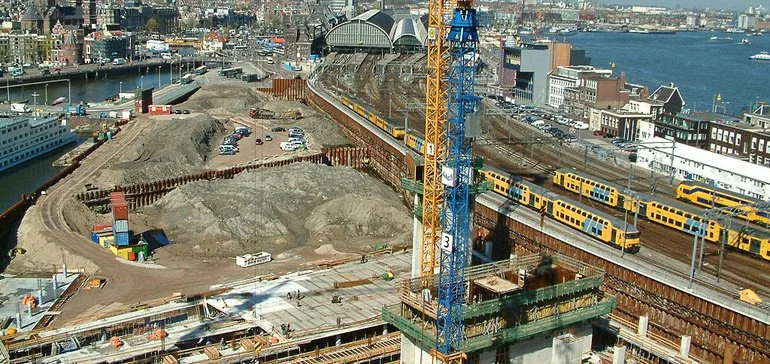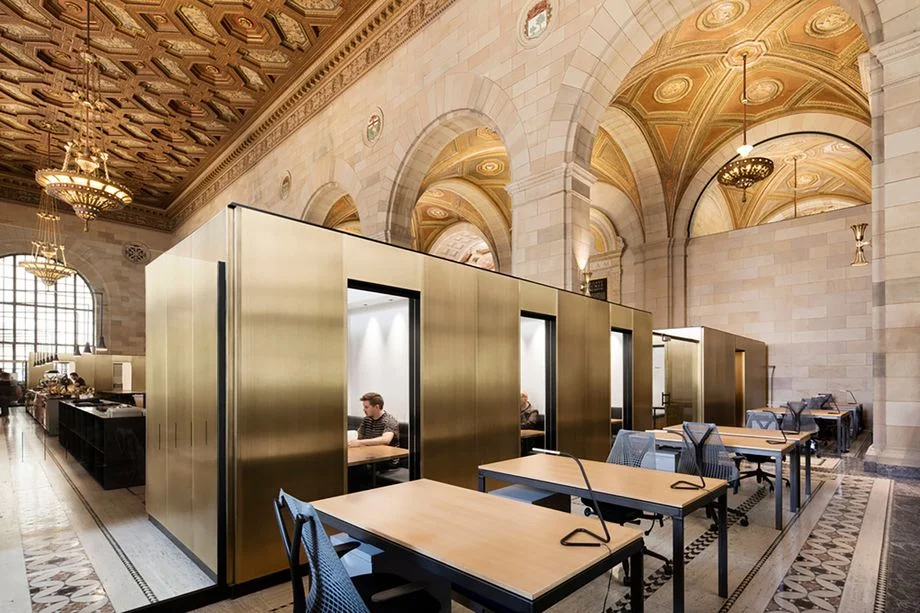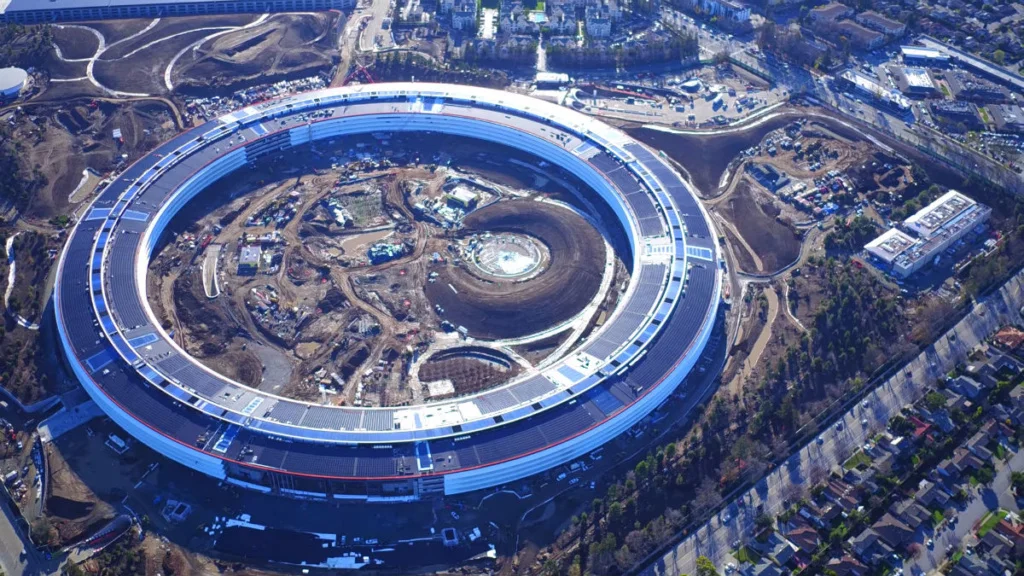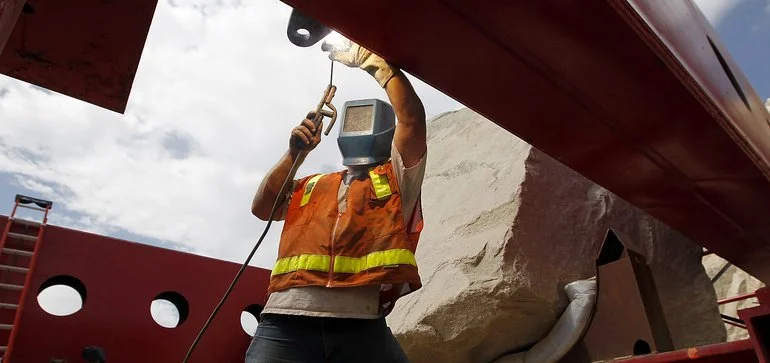The value of February nonresidential construction starts inched down 1.7% to $26.2 billion from an upwardly revised January total of $26.7 billion, which was less than the typical seasonal 2.5% decline in February, according to ConstructConnect.
Architecture Billings Index in February climbs back into positive terrain
The Architecture Billings Index (ABI) returned to growth mode in February, after a weak showing in January. [...] (AIA) reported the February ABI score was 50.7, up from a score of 49.5 in the previous month. This score reflects a minor increase in design services (any score above 50 indicates an increase in billings). The new projects inquiry index was 61.5, up from a reading of 60.0 the previous month, while the new design contracts index climbed from 52.1 to 54.7.
Construction Gains 58,000 Jobs in February
Architectural and engineering services, which BLS separates from the construction category, saw a pickup of 4,500 jobs during February.
NYC is the world's most expensive city for construction
International design and consultancy firm Arcadis has named New York City as the world's most expensive city in which to build, according to its annual International Construction Costs Index. Building in New York is 50% more expensive than in the average U.S. metro and 20% more expensive than in other pricey cities like Boston, Chicago and Los Angeles.
San Francisco follows behind New York in cost to build and brings its own set of issues — seismic requirements, lack of contractors and limited real estate — that raise costs. On the other end of the spectrum, building in Houston will cost developers 10% less than the national average.
4 Reasons Why Architects Urgently Need Better Building Specification Tools
It’s time to end building specification nightmares for architects. According to a newly released survey by the AIA, The Architect’s Journey to Specification, a large number of architects are disappointed with current resources available to them in the specifying process. In the digital age, firms are increasingly calling for better web-based tools to provide more nuanced ways to compare products by performance, criteria and price.
Vanity height: how much space in skyscrapers is unoccupiable?
In a world of ever-reducing space, a skyscraper is an efficient way to create homes and offices without too large a footprint. It is interesting, then, that so many skyscrapers are full of hot air. In the race for the biggest buildings, architects have fallen back on antennae and pointed spires – with the result that skyscrapers are not so much efficient uses of space, but overblown vanity projects.
Higher levels of uncertainty blamed for drop in UK commercial construction activity
Commercial construction activity in the UK for the 12 months to the end of 2016 fell to £16.7 billion, down 14.1 percent on the previous quarter, according to JLL and Glenigan’s Q4 2016 UK Commercial Construction Activity Index. In London, activity declined in a quarterly comparison but increased 2.7 percent compared to the same period a year ago. Construction started at 22 Bishopsgate in London City which will provide a total of 1.3 million sq ft of office space, and is scheduled to complete in 2019. The 70,000 sq ft office refurbishment of 33 Gutter Lane also commenced in Q4 with completion scheduled for the second half of the year. Elsewhere it was a mixed picture across the regions with commercial construction activity increasing in the North East, South West and Wales, albeit from a relatively low base; but activity was more subdued in other regions, particularly in Yorkshire and the Humber were the level of construction activity fell 22.0 percent y-o-y.
Office construction boom predicted for 2017
It’s barely February, but analysts are already predicting a bumper crop of office construction in the U.S. this year. Researchers from Dodge Data & Analytics anticipate a 10 percent increase in office construction starts—and 10 million more square feet—over 2016. Meanwhile, the chief economist of ConstructConnect, Alex Carrick, pegs the increase at 11.3 percent. Whatever the number, experts agree that private office construction is poised for a boom compared to other types of commercial construction. But why?
The answer is twofold. For one, there’s a bump in the number of jobs—like accounting, architecture, and engineering—requiring office space for more workers. Secondly, companies are building additional urban offices near public transportation to attract millennials who’d rather live and work downtown. Pedestrian-friendly locations near nightlife and transit hubs are especially coveted.
This Software Could Revolutionize How Buildings Get Built
Many people who design things for a living are familiar with software configuration tools that work with libraries of objects that graphically come together according to rules. The results might be a walk-through model of a building, a modular office system, or a fantasy world like what everyone under 20 knows about, thanks to Minecraft. ICE from DIRTT Environmental Systems is different: this tool is both disruptive and catalyzing, and it’s just beginning to penetrate the construction market.
There are other software configurator tools that will spit-out a bill of materials, but this ICE software is many levels deep, managing the middle office (logistics, labor rates, etc.), all the way to manufacturing (production queues, shipping). It's the most exciting software platform in the building materials industry I have seen, blending a conventional-enough looking sales tool with enterprise software.
Why 2017 will be the year of office construction
There's no denying it: Office construction in the U.S. is on the rise and will be for the foreseeable future. From the proposed tallest office-only skyscraper in Chicago since 1990 to the new Marriott headquarters planned for downtown Bethesda, MD, companies are getting to work in their quest to attract new employees in areas with robust economic growth.
Dodge Data & Analytics predicted in its 2017 Dodge Construction Outlook that office construction starts would finish 2016 9% higher than in 2015, primarily due to a few megaprojects in New York City, but would surpass that mark for 2017 with 10% more construction starts, or 10 million more square feet than in 2016.
VIDEO: 2 Drone Videos of Apple's Campus 2 for Mid-January
Take an inside look at Apple Campus 2's construction during one of the most rainy periods of time in recent history. Featuring jaw dropping aerial imagery via drone, this footage is sure to tantalize your senses.
Architecture Billings Reach Highest Level Since 2007
The monthly Architecture Billings Index (ABI) came in at a score of 55.9 in December, up 5.3 points from November's 50.6, the American Institute of Architects announced today.
The ABI is a leading economic indicator of construction activity in the U.S., and reflects a nine- to 12-month lead time between architecture billings and construction spending nationally, and regionally, as well as by project type. A score above 50, like this month, represents an increase in billings from the previous month, while a score under 50 represents a contraction.
10 construction industry trends to watch in 2017
With 2016 in the rearview mirror, construction professionals are turning their attention to the year ahead. While construction spending failed to meet analyst expectations last year, economists predict 5% growth in the value of starts in 2017, according to Dodge Data & Analytics.
Despite that positive forecast, a feeling of uncertainty continues to loom over the industry. We spoke with experts from various sectors of the construction sector to find out their predictions for 2017. While questions regarding what the incoming Trump administration means for construction dominated the conversation, they also described the new technologies, project delivery methods and workforce management trends they expect to shape the industry this year.
Startups New York City A $250 million Office Space is vying to be the future home for New York’s startup culture
Three years might as well be 50 in startup land. It’s hard to say precisely where New York City’s tech community will be by the time 2020 rolls around, but living in the Big Apple certainly doesn’t look to be getting any easier for recent grads looking to make a name for itself.
As Fast Company notes in a new profile on the upcoming 14th @ Irving workspace, the whole “Silicon Alley” concept has been nebulous one at best in a city that hasn’t traditionally be the most accommodating to news businesses.
But the $250 million, 254,000-square-foot project could, at very least offer a sort of hub as New York looks to further open itself to startups.
Growth in Architecture Billings Hangs on in November
The monthly Architecture Billings Index (ABI) came in at a score of 50.6 in November, down a scant 0.2 points from October's 50.8, the American Institute of Architects announced today. Following two months of contraction before October, today's release indicates continued growth.
The ABI is a leading economic indicator of construction activity in the U.S., and reflects a nine- to 12-month lead time between architecture billings and construction spending, nationally, as well as regionally and by project type. A score above 50, like this month, represents an increase in billings from the previous month, while a score under 50 represents a contraction.
Finishing Touches Applied to Foster + Partners' Apple Campus 2
BLS: U.S. Adds 178,000 Jobs in November
The construction industry continued to grow in November, adding 19,000 payroll positions. Construction jobs added in November outpace October's addition of 14,000 jobs, but still lag far behind the 65,000 positions added in November 2015. The manufacturing sector continued to shed jobs, losing 4,000 jobs in November. Meanwhile, payrolls in the architectural and engineering services sector lost 1,000 positions in November, following six consecutive months of growth.
Confidence Is High For US Construction Industry
JLL’s new report on the state of the US construction industry may not be as optimistic as the outlook it published earlier in the year, but Todd Burns, president, project and development services, tells GlobeSt.com that confidence, though tempered, remains high.
“Clearly, we all know we’ve been riding a nice wave over the past few years,” he says, and it may be difficult for the economy to sustain its current level of construction activity. For one thing, “people are unsure about the results of the recent presidential election, and that means there are some unknowns.”
Architecture Billings Tick Up in October
The AIA’s monthly Architecture Billings Index (ABI) increased to a score of 50.8 in October, up 2.4 points from September's 48.4, the Institute announced today. More importantly, those 2.4 points moves the index and the design and construction market from contraction back to growth.
"How Donald Trump will solve America's infrastructure problems is completely unclear"
Hillary Clinton's plans to improve infrastructure in the USA weren't ambitious enough, but at least she had plans, says Aaron Betsky in this Opinion column.
America needs a lot of work. Its roads and bridges are crumbling. Its airports are a mess. It has virtually no long-distance public transportation system. Below the surface, sewers and water lines are leaking billions of gallons. Something needs to be done. Will President Trump do it? Nobody knows.
There was a plan. In her election platform, Democratic candidate Hillary Clinton promised $275 billion in infrastructure investment. All but $25 billion of that would have come from the federal government, and she says she would have paid for it with new taxes on the wealthy.
The $25 billion would, she claimed, have leveraged another $250 billion in private investment. Trump has no more than the notion that he will come up with such a plan and spend a trillion dollars, which at least is a lot more than Clinton would have.
Just about every presidential candidate for the last three decades has promised to address the deferred maintenance all around us and help build a better base for economic growth and social cohesion. In 1992, I wrote several articles about the massive investments in infrastructure presidential candidate Bill Clinton promised. I even bought stock in construction companies I thought would benefit from the coming boom. I was wrong.

























